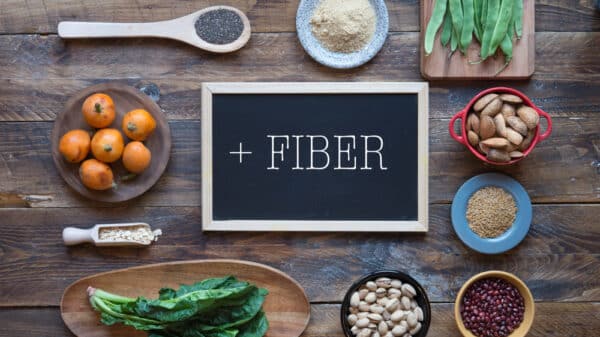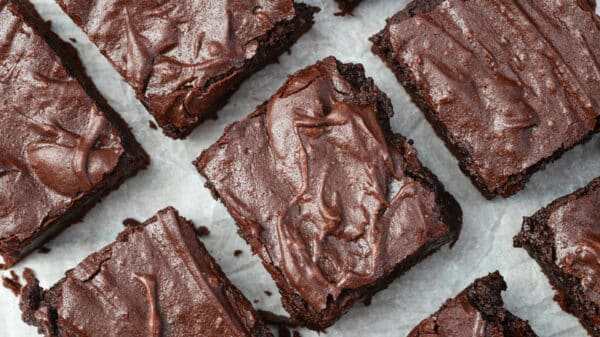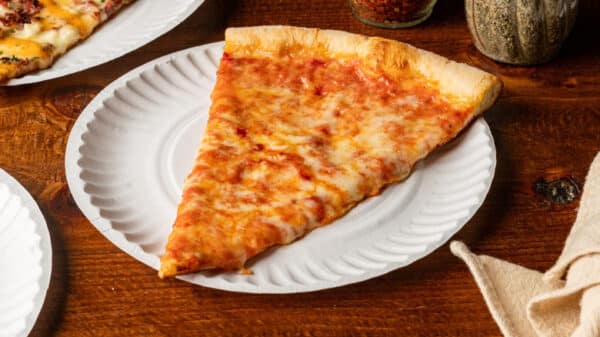Reducing visceral fat isn’t merely a concern about fitting into your favorite pair of jeans; it’s significantly tied to your overall health and well-being. When we talk about visceral fat, we’re referring to the type that wraps itself around your internal organs—a condition that has been linked to an increased risk of heart disease, type 2 diabetes, and various other chronic conditions. This can sound daunting, but here’s the silver lining: your diet can actively influence how much visceral fat you carry, and there’s one nut that stands out for its potential benefits.
Almonds, for example, are nutritional powerhouses. They bring a triumvirate of important nutrients to the table: heart-healthy fats, plant-based protein, and dietary fiber. As highlighted by registered dietitian Stacy Lofton, “They help you stay full longer and influence how your body stores fat, especially around the waist.” In this discussion, we will delve deeper into how almonds can support a healthier body composition, the science behind their advantages, and additional lifestyle tips aimed at shedding fat from that stubborn midsection.
How Almonds Help You Lose Visceral Fat
They Help You Feel Full
One of the primary ways almonds can aid in reducing visceral fat is by enhancing your feeling of fullness—or satiety. This sensation plays an essential role in helping you manage your hunger levels and prevent overeating. Almonds are rich in fiber, protein, and healthy fats, each contributing to slower digestion and signaling your brain that you’ve consumed enough. Lofton points out that with around 6 grams of protein and 3 grams of fiber per ounce, almonds deliver a powerful punch that not only keeps you satisfied but also stabilizes your blood sugar levels.
They Support Insulin Sensitivity and Stable Blood Sugar
Insulin resistance is a major player in the accumulation of visceral fat around your organs. Luckily, almonds pack monounsaturated fats, magnesium, and antioxidants like vitamin E and polyphenols—elements that work in concert to bolster insulin sensitivity and keep your blood sugar levels in check. Research indicates that including almonds in your diet can have a positive effect on how your body processes glucose.
Lofton further explains the critical role of magnesium, noting that it is involved in myriad metabolic processes, particularly those related to glucose and insulin. Just one ounce of almonds can provide about 20% of your daily magnesium needs. “Their fiber and healthy fats slow digestion and reduce insulin spikes, which is key for metabolic health,” adds Erin Jowett, another registered dietitian.
Not All of Their Fat Is Absorbed
You might think almonds are calorie-dense, but there’s good news: not all those calories are available for your body to absorb. The structure of almonds makes them difficult to break down completely, which supports your goals of reducing visceral fat while also keeping you feeling nourished. A study from 2023 found that the actual calories absorbed from whole almonds are about 20-25% lower than what you see listed on nutrition labels. This means you can enjoy almonds without the worry of them leading to unwanted fat storage.
“Incorporating almonds into a balanced diet doesn’t contribute to fat gain; instead, it can promote metabolic health and enhance insulin sensitivity as part of an effective weight management plan,” Lofton reassures us.
They Reduce Inflammation and Oxidative Stress
Almonds do more than just provide essential nutrients; they’re also loaded with antioxidants known for their anti-inflammatory properties. “The vitamin E and polyphenols in almonds help battle inflammation and oxidative stress,” explains Jowett. These compounds work to neutralize free radicals that can damage cells and promote chronic inflammation—two factors that can drive the accumulation of visceral fat and negatively affect your metabolic health.
Other Foods That May Help
If you’re looking to diversify your diet while continuing your journey to reduce visceral fat, consider incorporating other nutrient-rich foods:
– Fatty fish: Varieties like salmon, sardines, and mackerel come packed with omega-3 fatty acids, known for reducing inflammation and enhancing insulin sensitivity. They may also promote fat burning in various tissues, aiding in fat storage reduction.
– Fruits and vegetables: These are rich in fiber and antioxidants, both of which can be beneficial for reducing visceral fat. One interesting study noted that just a daily increase of 3.5 ounces in fruit and veggie consumption was linked to a reduction of up to two-thirds of an inch in visceral fat among women.
– Yogurt: This creamy delight is not just tasty; it’s packed with protein and probiotics. These elements may help reduce visceral fat by supporting gut health, enhancing satiety, and lowering inflammation.
In conclusion, staying mindful of your dietary choices is a powerful way to influence your body’s health and vitality. A handful of almonds might just be a small yet impactful step in your journey toward a healthier you. So, as you navigate your wellness path, remember that even small actions can yield significant results—one delicious nut at a time.To effectively tackle visceral fat, it’s crucial to think beyond just diet. This type of fat, which wraps around your organs, is linked to several health risks, including heart disease and type 2 diabetes. But don’t let that overwhelm you; the journey to reducing visceral fat doesn’t have to be restrictive or daunting. As nutritionist Lofton puts it, “Reducing visceral fat isn’t about restriction; it’s about routine.” The good news is that small, consistent changes in how you eat, move, and live can lead to meaningful improvements.
Start by focusing on what you eat. Adopting a Mediterranean-style diet could be an excellent choice. This way of eating—rich in vegetables, whole grains, legumes, olive oil, and nuts (like almonds)—has been shown not just to target visceral fat but also to improve overall metabolic health. By shifting your meals towards these whole, natural foods, you’re providing your body with the nutrients it needs while keeping hunger at bay.
Another key factor is limiting refined carbohydrates. It can be tempting to reach for quick snacks or sugary drinks when you’re on the go, but these often lead to insulin spikes and energy crashes. Jowett emphasizes avoiding ultra-processed foods. Research supports that a higher intake of these foods correlates with increased body fat, particularly in the visceral area.
Now, let’s talk about movement. Many of us associate exercise with high-intensity workouts or lengthy gym sessions, but that’s not necessary to combat visceral fat. Simple, everyday movements can make a significant difference. Whether it’s taking a brisk walk during your lunch break or incorporating short bursts of activity throughout your day, consistency is key. Lofton advocates for finding ways to integrate movement seamlessly into your lifestyle rather than making it feel like a chore.
Sleep is another often-overlooked aspect of our wellness routine. You might not realize that just one night of poor quality sleep can disrupt your hunger hormones and impact your insulin sensitivity. This can lead to increased cravings and, ultimately, a higher risk of storing visceral fat. Prioritizing quality sleep isn’t just about feeling rested—it’s about setting your body up to effectively manage weight and harness energy.
To help you get started, consider a meal plan tailored to boost your fiber intake. High-fiber foods can help you feel fuller longer and can regulate your appetite. For guidance, there are comprehensive meal plans created by dietitians that focus specifically on reducing visceral fat over a 30-day period, making it easier to incorporate these healthy habits into your daily routine.
Lastly, it’s important to remember that while no single food will magically eliminate visceral fat, incorporating nutrient-rich options like almonds can support your weight loss journey. Along with a balanced diet, ensure you’re also getting quality sleep, staying active, and minimizing processed food intake. By embracing these manageable lifestyle changes, you’re not only working towards losing visceral fat but also fostering your overall health and wellbeing. You’re not alone in this journey; many people face similar challenges, and with persistence and patience, it’s entirely possible to reach your health goals.
Image Source: Pixel-Shot / Shutterstock































